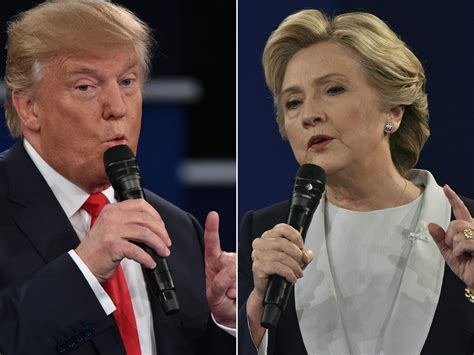The cover of the March 21st issue of The Weekly Standard displays a fanciful drawing of Alexander Hamilton—who thanks to Broadway and Ron Chernow is a hot number these days—and Donald Trump. Hamilton stands nobly erect, a solemn, somewhat mournful expression on his face. Opposite the great statesman crouches Trump, whose body language expresses Trumpism in its essence: the all-too-familiar bawling mouth, swept-back hairdo, and the middle-finger salute, the visage of an emotionally overwrought twelve-year-old masquerading as a presidential candidate.
The title accompanying the cover illustration asks almost plaintively: “What Would Hamilton Do?” And the article, by Noemie Emery, attempts to answer the question.
In summary, Emery takes history as her guide in prescribing a possible course of action for American voters, year 2016. The historical event at its core is the famous election of 1800 in which Thomas Jefferson and John Adams vied with one another for the presidency. Due to the odd fact that electors were required to vote for two candidates for president, Jefferson and Aaron Burr, who was intended as the vice presidential candidate for Jefferson’s old Republican party, tied for the presidency with Adams out of the picture.
The contest was then thrown to the House of Representatives, which proceeded to hold thirty-five votes, all ties, until James Bayard of Delaware changed his vote in favor of Jefferson.
How did Hamilton figure into this mess? In just his way: although an implacable enemy of Jefferson’s, he argued, as Emery (quoting from Chernow’s biography) recounts, Jefferson “was a rational man with coherent ideas who operated within the normative range of accepted behavior in life and in politics, while Burr was something fundamentally different—a man for whom norms, rules, and boundaries didn’t exist.” One might see the difference as that of selecting an advocate of recognized civility over an advocate of the jungle, of cutthroat political adventurism. So it was in 1800.
As Emery goes on to observe, our enlightened times have produced a similar situation in which, if current trends continue, modern Republicans will find themselves confronted with the frightening choice of Trump or the Democrats’ likely nominee Hillary Clinton. Hence, TWS’s cover story, “What Would Hamilton Do?” What he would do, as the article leads one inevitably to think, is vote for Hillary.
Emery concludes: “Once in a blue moon, or twice in two centuries, a Burr or a Trump comes along who is truly an outlaw, someone outside the normal perceptions of what is acceptable, who marks himself off as not to be trusted. In that case, when and if it should happen, the Hamilton gambit may not be the worst card to play.”
The argument is interesting, and one does not have to read much to know that it’s becoming at least somewhat familiar as a possible avenue for prospective, thoroughly terrified Republican voters.
However, with all due respect to Noemie Emery whose article is admirable and enjoyable, even if it may be true that a Trump or Burr surfaces once in a blue moon, it’s almost inconceivable for two Trumps or two Burrs to emerge at the in the same election over the course of even one hundred blue moons. Arguably, it’s never happened in our history. Yet that remote possibility threatens us this year unless something changes drastically.
Donald Trump is every bit as frightening as Burr, a conniving egotist who hopes to demagogue himself into the oval office and then artfully deal his way toward who knows what self-serving ends—certainly not the policies his populist supporters dream of.
Allowing that, Hillary Clinton hardly falls, to quote from Chernow’s Alexander Hamilton, “within the normative range of accepted behavior in life and in politics.” Quite the opposite, practically from the start of her national career she revealed herself to be a ruthless, greedy, power-hungry, calculating liar. The list of shady deals, from her $100,000.00 cattle-shares windfall to her secretive home-brew server during her tenure at the State Department, are breath-taking in their perfidy. There is some reason to suspect she used her office in the Obama administration to feather the nest of the faux-charitable Clinton Foundation through quid-pro-quo arrangements with foreign governments.
Regarding her more conventional foreign policy decisions, there’s the Libyan fiasco at Benghazi that, far from leaving no one dead, as Hillary recently crowed, saw the murder of Ambassador Chris Stevens, Sean Smith, and two ex-navy SEALs, Tyrone Woods and Glen Doherty. In contortions that would outdo Houdini, she has bent over backwards to deny her notorious declaration (when the casket of her “friend” Chris was returned to our shores) that an anti-Mohammed video incited the attack—a tale soon belied by the plain facts of an organized terrorist attack on the consulate.
Of her disgusting reply of “What difference does it make at this point” to the congressional committee investigating departmental culpability, little needs to be said except that it hardly inspires confidence in one seeking the office of commander-in-chief.
The conundrum of Burr versus Jefferson, so easily solved when Hamilton encouraged Bayard to vote for the man who penned the Declaration of Independence, seems almost quaint in our present circumstances. A Trump/Clinton contest isn’t remotely analogous to the choice of Mr. Burr versus Mr. Jefferson; it’s more like the impossible dilemma of Mr. Burr versus Mrs. Burr, male and female Burrs “for whom norms, rules, and boundaries” don’t “exist.” Confronted with such a prospect, a modern-day Hamilton just might prefer to slit his throat.
What are we to do? I can’t speak for the Democrats, who won’t listen anyway, but for Republicans, a collective of Representative Bayards, I can suggest but one solution: while you can, vote for Ted Cruz.
